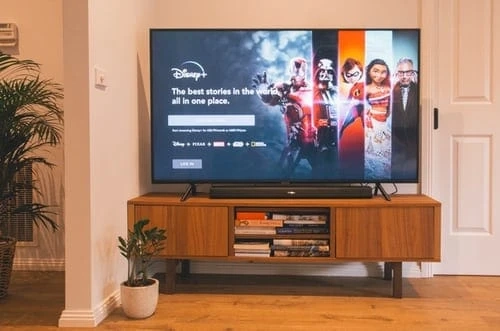It is quite simple to become perplexed while purchasing a television in today's digital world. Today's televisions are equipped with a wide range of technologies, features, and functions. Before you buy an LED TV online in India, you should be aware that it is a considerable investment. You would also like to be certain that your investment will be beneficial.
So, here is a list of things you should consider before buying a television.
Size of the screen
Consider where you will put your television. Then, based on your budget and available space, you may decide on a size. Typically, 43-inches is the sweet spot for a medium-sized bedroom (modify this if your room is smaller than typical or if your couch set or bed is closer to the TV). However, 55-inches to 65-inches is appropriate for the living room. If your budget does not permit it, simply relocate your sofa set closer and purchase a smaller screen.
A reasonable rule is to sit three times the height of the TV screen for HD TVs and 1.5 times the height of the screen for 4K UHD TVs. It's because 4K TVs are less pixelated than HD TVs at close range.
TV Resolution
When shopping for a television, one of the most important selections to make is the resolution. While the first wave of 8K TVs has just recently hit the market. 4K smart TVs remain the best spot, with plenty of models on the market. For a long time, Full HD (1920x1080) TVs were the industry standard; however, most manufacturers are now focusing all of their efforts on 4K versions. These offer four times the pixels of FHD TVs and are noticeably better in terms of quality.
If you want to save money, Full HD TVs are also pretty good for the price, and most untrained eyes won't be able to detect the difference unless you sit very near to the TV. However, the growing amount of 4K content available on Netflix, Amazon Prime, and even YouTube may facilitate a better overall viewing experience. Furthermore, most 4K TVs are HDR compatible, which means you'll get those deeper blacks and brilliant colours that significantly enhance the movie-watching experience.
TV Display Type
LCD/LED and OLED are the most common display formats in televisions. The majority of televisions sold now are LCD LED sets that use LEDs to light the LCD screen. When purchasing an LCD LED TV, you should examine how the display is illuminated. Some utilize edge-lit panels, which have LEDs just on the screen's edge.
LEDs positioned right behind the screen in full-array LED sets may light up or darken particular zones to simulate light and dark parts in any scene. Active dimming, also known as local dimming, allows the lighting to be more exact, resulting in higher-quality pictures. Another LCD technology present in these sets is quantum dots, which provide an extra layer of nanocrystal dots to the display.
OLED TVs use organic LEDs to create deep blacks (the darkest blacks) and excellent contrast levels. OLED panels are only seen in 4K sets and are significantly more expensive than LCD LED TVs. The above-mentioned quantum dot technique is used in QLED technology. While these appear to be colourful, they should not be confused with OLED televisions.
Refresh Rate
The refresh rate (in Hertz or Hz) indicates how many times a picture is refreshed on the screen each second. The usual refresh rate is 60 Hz, however, 120 Hz TVs are becoming more widespread. A greater refresh rate undoubtedly translates to more fluid animation, especially in fast-paced action sequences. During such intense sequences, 60 Hz screens may exhibit unstable output. If you're a gamer, you might be motivated to add a TV with a high refresh rate, but gaming consoles often peak out at 60 frames per second, so stick with them.
Connectivity
Always keep in mind the number of connectivity choices a TV has to offer, especially if you want to connect a lot of gadgets to your TVs, such as a soundbar, a streaming stick, and a console. You will run out of HDMI ports pretty rapidly. Also, try to go with the newer HDMI 2.1 version because it has benefits like variable refresh rate support. When you connect your gaming console to the TV through HDMI 2.1, you will also experience smoother gameplay and no screen distortion. You will also have prepared your TV for future 8K content. Along with HDMI connectors, you should search for USB, Wi-Fi, and Ethernet ports.
Sound
When analysing the sound on your television, remember that the higher the wattage, the louder the sound output. It is critical, especially if you have a large house and require sound to reach longer distances. Play a few intense action moments and then listen for the following characteristics:
Be wary of TV cabinet shaking, directional distortion, and a strange 'puffing' sound when under strain. Furthermore, if you want the finest sound experience, consider investing in a solid sound system set up by selecting a nice soundbar.
0


